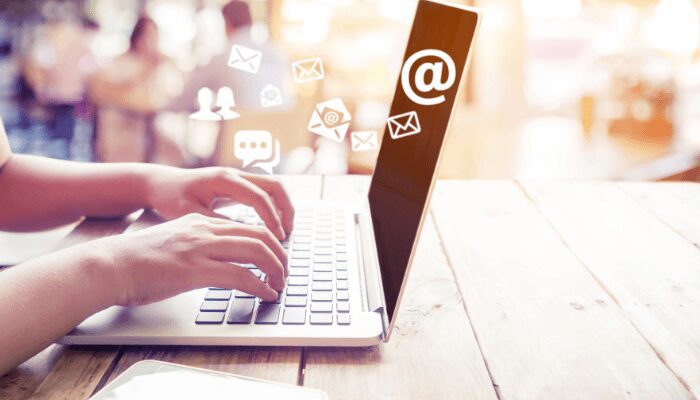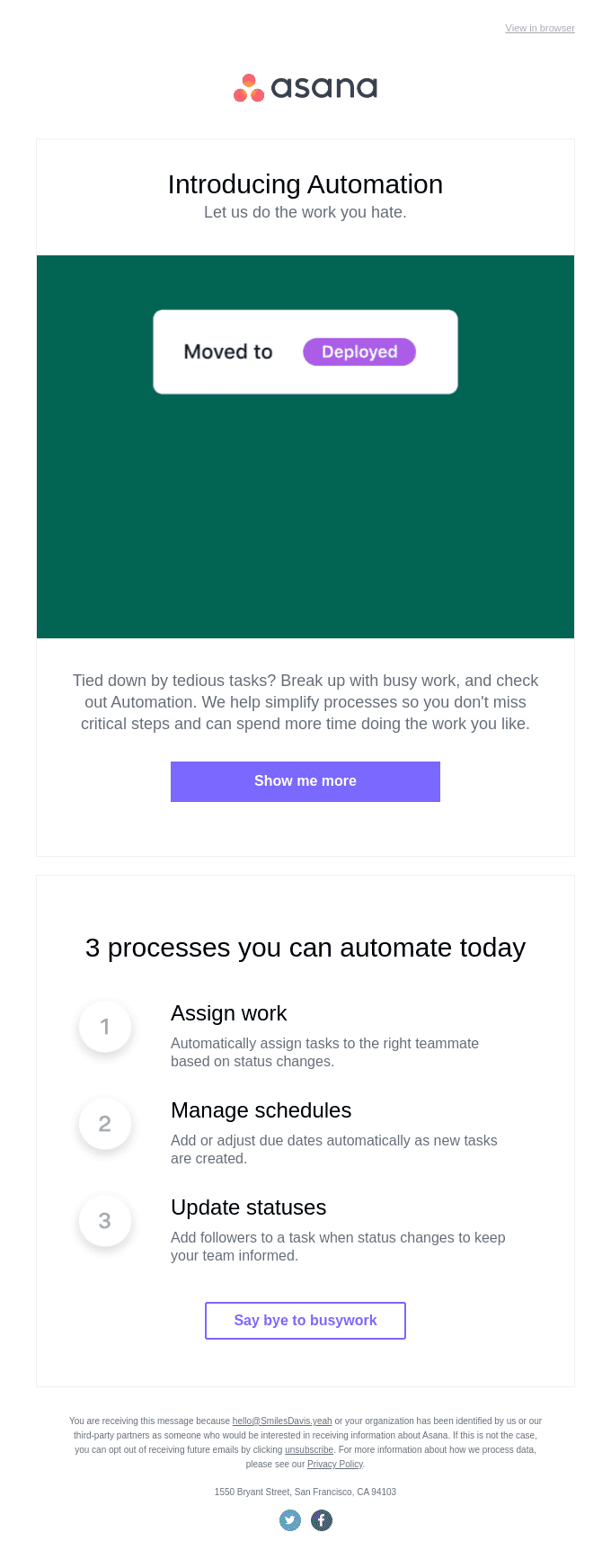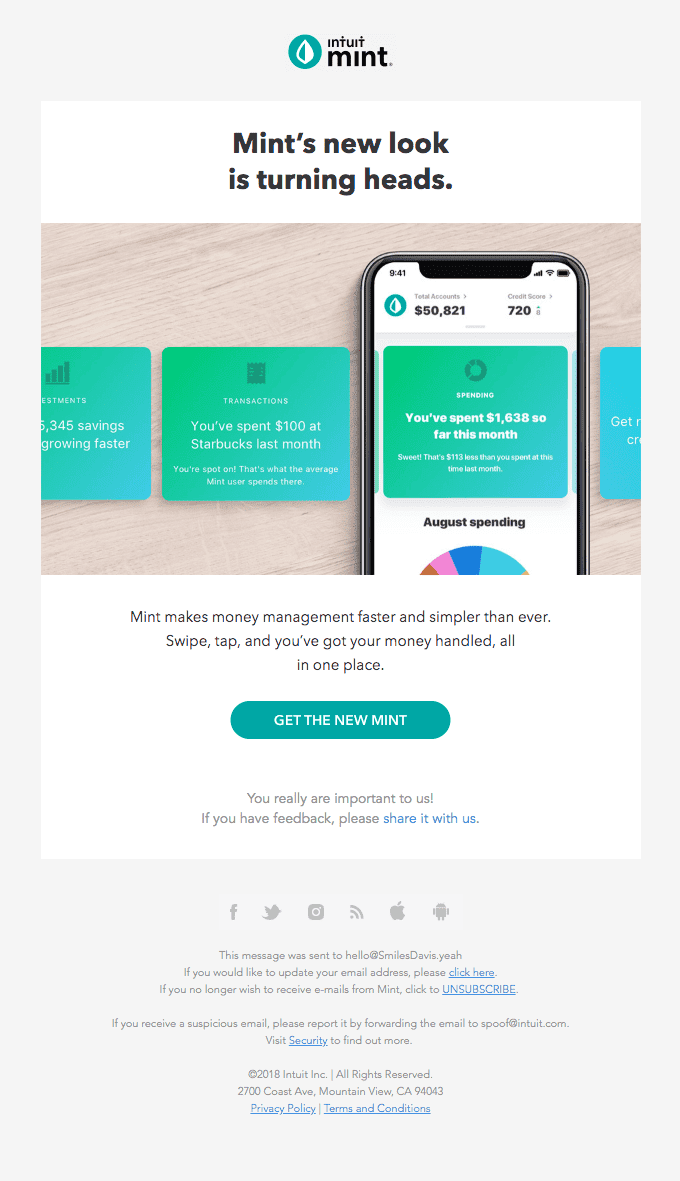
5 Email-Based Retention Strategies to Reduce Customer Churn
How can you use email to reignite people’s interest in your brand? Josh Brown, Digital Marketing Consultant at Helpjuice, brings you some of his best tricks to reduce customer churn and improve ROI.
In a recent article on email personalization on ZeroBounce’s blog, Adela Belin makes it clear: “Email marketing is one of the most effective ways of obtaining and retaining customers.”
This echoes ZeroBounce’s previous findings, showing that email marketing is the biggest driver of retention for 80% of the businesses surveyed.
It’s just a fact: a strategic approach to email marketing is essential for keeping your customers onboard and engaged with your brand. On the flip-side, email can also be used to re-engage those who may be showing signs of future churn.
Retention is always an overarching goal when emailing your customers.
But, the way in which you approach this goal depends on the context. Using email to engage your new customers, for example, will look a whole lot different than using it to retain your long-time clientele.
On that note, let’s now dig into the many ways you can use email to keep customers engaged and moving forward in their journey at any stage of their lifecycle with your company.
Welcome and onboarding email campaigns build habitual engagement
Once a potential or first-time customer provides you with their email address, you officially have permission to start engaging with them via said channel.
And you don’t want to waste the opportunity you’ve been given.
Welcome or onboarding email campaigns can take a number of different forms — each with the goal of enhancing new customer engagement from the get-go.
In some cases, you might choose to send a welcome email that provides more information on what your company is all about — setting the stage for your new customer’s future experiences with your brand.
Here, Rock Candy Media makes it clear from the start that its approach to marketing is like no other.
The benefit of sending such an email is two-fold.
For one, it builds a sense of intrigue within the recipient. Those who were interested enough to sign up for the brand’s mailing list will certainly want to learn more about how Rock Candy Media uses psychology to create engaging content.
Secondly, it sets standards for the company to live up to, and gives the customer something to look forward to. This plants the seeds for retention, as the customer will be more likely to stick around as the brand continues to fulfill its promises.
You might also flip the script a bit, here, and use your welcome email campaign to learn more about your new customers. The Glenlivet cuts right to the chase, using its initial email to ask newbies how they take their whiskey:
The team can then segment new customers based on the option they chose — allowing them to send out more personalized email content right away. This, of course, is huge for building retention from the start.
You may also need to provide a bit more direction for your new mailing list subscribers.
(After all, being new to your brand, they might not know how to proceed on their way to achieving their goals.)
You might need to explain to them:
- which of your products or services is best for their circumstances,
- how to use the products they’ve purchased, and
- instructions for advanced use of your products.
You may simply provide a number of paths for them – delivering the instructional documentation they choose on your website or blog.
Or, you can deliver instructions for specific tasks sequentially, or based on what you know about your new customer’s needs and expectations:
If an individual doesn’t open or engage with your welcome email, a helpful reminder can nudge them toward the path that’s right for them:
And, of course, for soft-converters who have yet to make an actual purchase, you can deliver promotional offers to get them to do just that.
(Quick note: Be careful when offering discounts on initial purchases, as you don’t want to be seen as a “discount brand” right off the bat, nor do you want to attract those who are only interested in taking advantage of such discounts.)
As illustrated by the above examples, the approach you take depends on the complexity of your product or service, and what your new customers need to get started with your brand.
In each case, though, the goal remains the same: keep your new customers on track and headed toward success.
Behavioral emails deliver personalized value at just the right time
In 2017, fashion giant Bloomingdales announced that it had seen an astounding 50% increase in revenues from 2015-2016.
How’d they make it happen?
Behaviorally-triggered emails.
These emails allow you to reach out to individual customers soon after they’ve taken a specific action. In doing so, you can not only personalize the offer held within the email, but also personalize the delivery of said offer as well.
(Which, to be sure, will give a huge boost to your campaign performance. As a 2017 report from LiveClicker found, 55% of consumers appreciate emails with relevant offers – and will ignore or opt-out of emails if the offers are irrelevant.)
Here, the email you send will depend on the action the customer takes.
(Technically, we can lump welcome emails into all this, as they’re to be sent once a customer signs up for your list or makes a purchase.)
After a customer makes a purchase, you’ll typically send out a standard confirmation email. You can enhance the value of this email – and get more value from your customers – by providing upsell and cross-sell offers before the package ships:
After a certain period of time has passed (or, once your customers reach a certain milestone), you’ll want to request some feedback on their experience thus far.
So, you might use email to deliver a quick survey:

Or send a product review request:
If a customer has recently requested and received support from your service team, you’ll want to find out how their experience went:
In each of these cases, the email will go out at some point after the customer took a certain action – using context and past experiences to drive further engagement with your brand.
You also want to create trigger emails for when customers don’t take the action you’d hoped for.
For example, if a customer logs onto your site, adds a few items to their cart, and leaves without making a purchase, you’d want to send an email reminding them to finalize the transaction.
Or, if they didn’t even add anything to their cart, you can still deliver personalized recommendations based on the pages they visited, their previous purchases, and more.
Here, the goal is to get the customer to take the action you’d wanted them to take in the first place.
(You can take this a step further by offering upsells and cross-sells to those who may be looking for more valuable products before they finalize their purchase.)
The customer actions we’ve discussed here are pretty universal, so you certainly want to have triggered emails prepped and ready to be sent out as needed.
Still, it’s up to you to dig into your customers’ actions to determine which high-stakes behaviors to promote around. In turn, you’ll always be able to reach your individual customers at just the right time to keep them onboard.
Segmented email campaigns keep customers “in the know”
In addition to sending out personalized emails to your individual customers, you’ll also want to send out the occasional audience-wide email campaign, too.
Typically, email campaigns are best used to make announcements regarding your products, services, or overall brand. From product releases and improvements, to changes in service, to promotional sales events, you’ll have many reasons to get in touch with your entire audience in one fell swoop.
Still, you can change up the way in which you make these announcements to different members of your audience in order to make them more relevant.
(Remember: Sending irrelevant emails is just asking for customers to unsubscribe and churn.)
For example, if offering 20% off certain products for a Mother’s Day sale, you could create separate emails for:
- husbands looking to buy something nice for the mother of their children,
- adult children looking to buy something nice for their moms, or
- moms and adult women looking to treat themselves to something nice.
In creating separate emails for each of these personas, you add contextual relevance to a universal offer. Done right, this approach will generate much more engagement than an audience-wide email campaign would.

You can use segmentation to inject relevance to announcements regarding your products, as well.
For example, say your audience frequently cites three main concerns when providing feedback. After making the appropriate improvements, you’d then segment your audience based on their expressed concerns – and create three emails for each, focusing on their specific issue.

(You’d include additional information about the other updates, as well – but would still focus on the improvement that matters most to each segment.)
When you have something to tell your entire audience, it’s vital that you say it in a way that resonates with each of your individual customers. The more relevant the message, the more likely your customers will be to convert yet again.
Re-engagement emails pull reluctant customers back in
We touched on this earlier on when talking about browser and cart abandoners.
Email is one of the key ways to get at-risk customers back to their previous levels of engagement – and then some.
Nailing your re-engagement campaigns is all about recognizing the individual customer’s engagement patterns and purchasing habits. Once you’ve identified these cycles, you’ll then be able to recognize when a given customer does not complete an anticipated action.
From there, you can send triggered emails to nurture them forward in some way or another.
For example, if you have an app to connect with your customers, you might send out replenishment reminders both on that platform as well as through email to those customers as they run out of product.
In some cases, you can use a similar tactic to increase purchase frequency (rather than just maintain the buying pattern). For example, you might offer a deal on a bi-weekly delivery subscription to those who have been habitually making monthly purchases of a given product.
If you notice certain customers becoming less and less engaged, you might try to get them to upgrade to a more valuable product or tier of service:
Rather than allowing your users to experience diminishing returns from your more basic offerings, it just makes sense to pile on the value – and keep them from defecting to a competitor in the process.
If your hesitant customers still don’t engage with your re-engagement emails, you’ll want to figure out just why that is. Here, you might solicit feedback about their overall experience with your brand.
Or, again, if you’ve made recent improvements to your products, services, or overall experience, you want your decreasingly-engaged customers to be made aware of such:
One very important thing to mention here.
When looking to get your hesitant or at-risk customers back on track, don’t take the “We miss you!” approach. To the customer, all this really means is “we miss your business”.
Instead, focus on providing value to them – even if it means taking a loss. A last-ditch, Hail Mary effort to retain an at-risk customer today can lead to massive returns should they return to their previous levels of engagement.
Exit emails give you one last shot at avoiding permanent churn
At some point, some of your customers will eventually end their relationship with your brand.
When there really isn’t anything you can do to keep an at-risk customer from churning, you have three goals:
- Learn as much as you can from the customer.
- Keep the door open for potential future engagements.
- Part ways on a high note.
A quick exit survey can help you accomplish all three of these goals in one fell swoop.
Overall, you’ll get a better understanding of your churning customer’s needs (and your ability to meet them). Groove uses email to deliver personable exit surveys to users before they churn – and sees an incredible response rate from their approach.
Not only can you then use this feedback to make improvements for your current customers, you can also ask your churning customers for permission to contact them once you’ve done so. Though the customer may be leaving your company for the moment, there’s still a chance they’ll come back should your new-and-improved offering be more to their liking.
And, even if a customer does not wish to be contacted any further, an exit survey provides a means to part ways on good terms. With a relatively positive experience to remember you by, your former customers may then be more likely to refer others to your brand in the future.
No matter the outcome, sending one last email to your soon-to-be-former customers is better than sending nothing at all. At worst, it’ll just be ignored… but, at best, it could be the first step toward building an even stronger relationship with your former customers at some point down the line.
Want to improve retention and avoid churn? Use email
As digital channels evolve, new ways of keeping customers engaged are constantly popping up.
Still, email continues to prove itself as the most effective way for brands to retain their audience and keep customers from churning.
As you experiment with your retention email campaigns, it’s vital that you maintain control over the information used to create them, as well as the content you create for them.
Table of Contents
- Welcome and onboarding email campaigns build habitual engagement
- Behavioral emails deliver personalized value at just the right time
- Segmented email campaigns keep customers “in the know”
- Re-engagement emails pull reluctant customers back in
- Exit emails give you one last shot at avoiding permanent churn
- Want to improve retention and avoid churn? Use email























